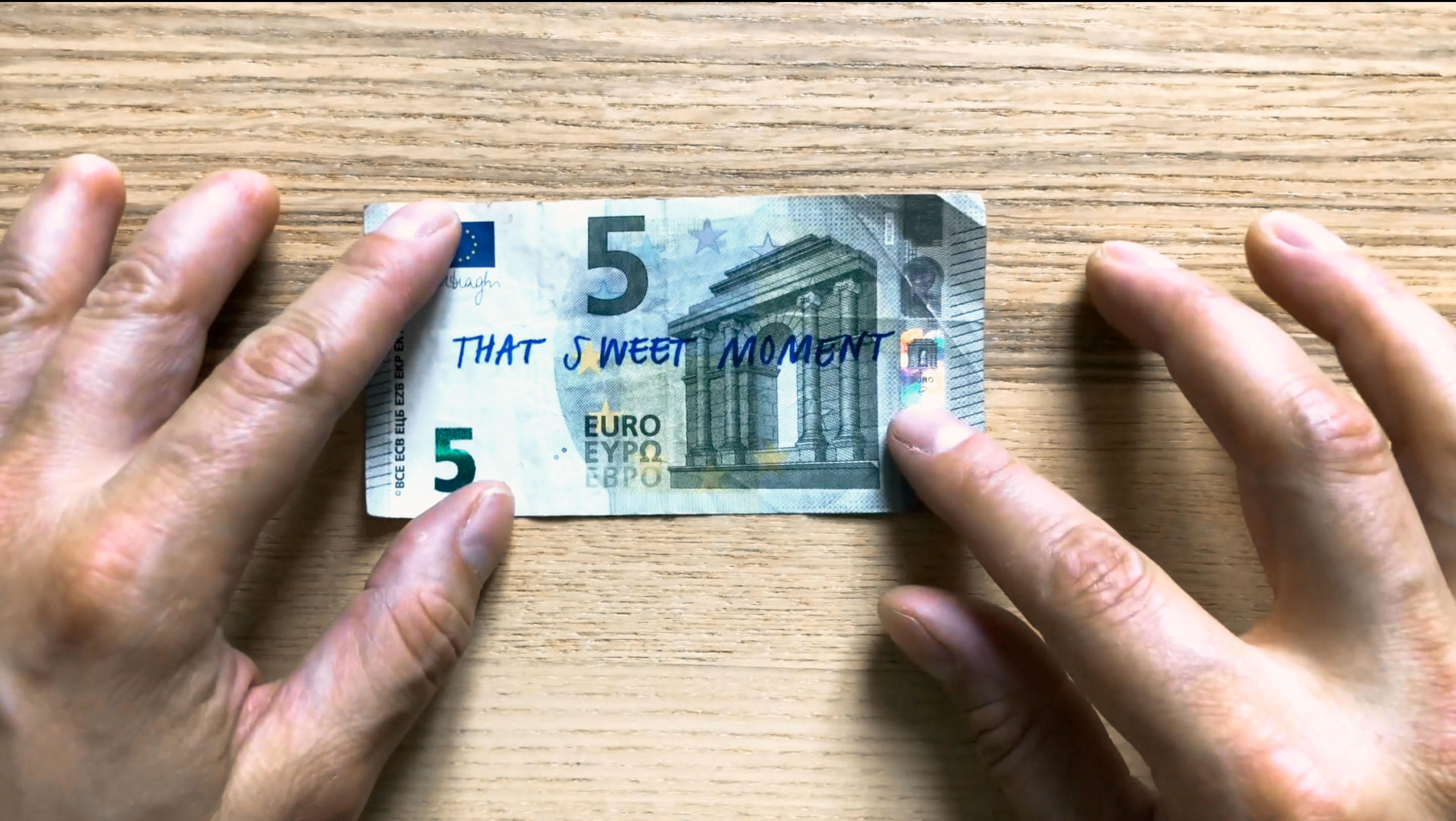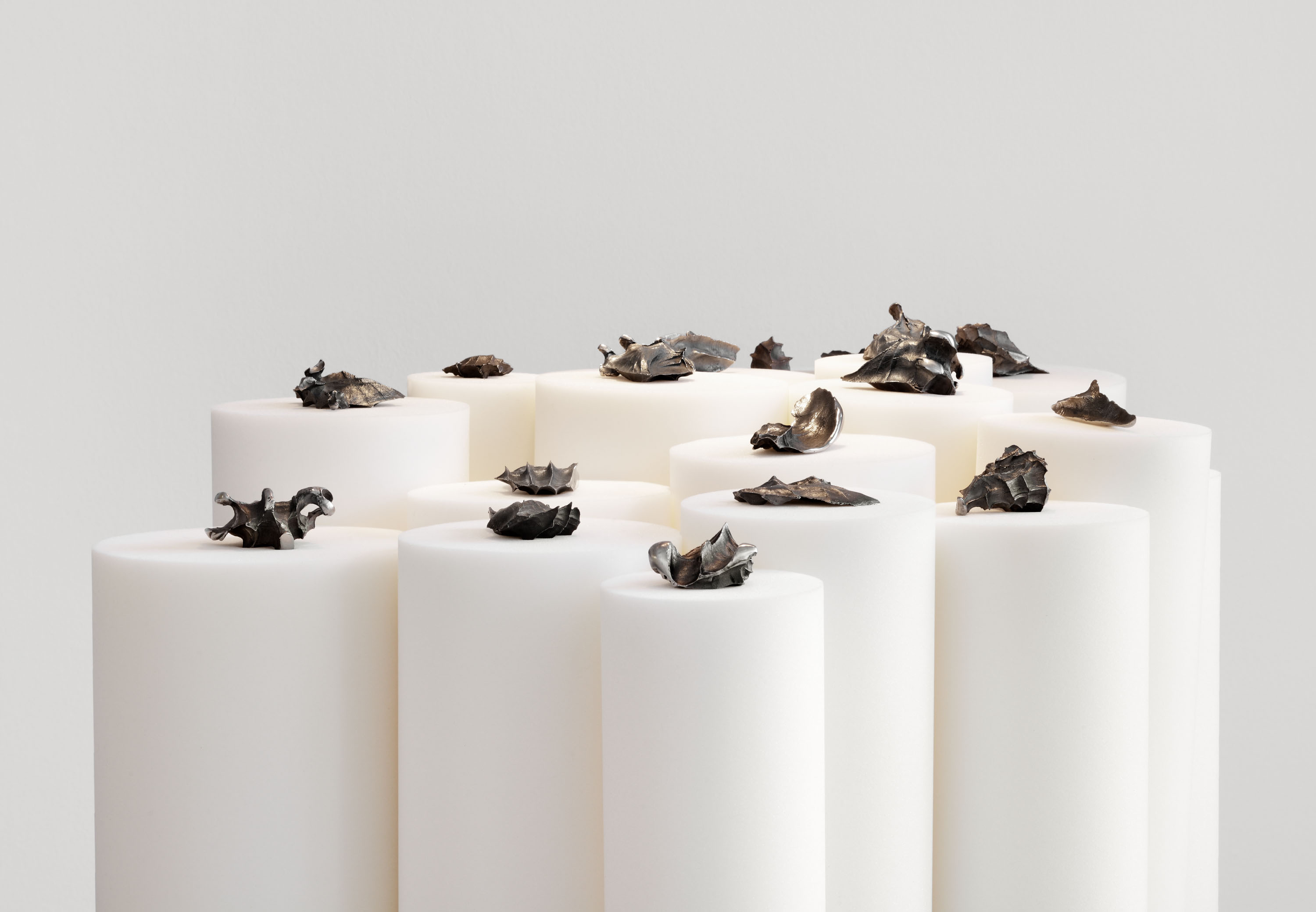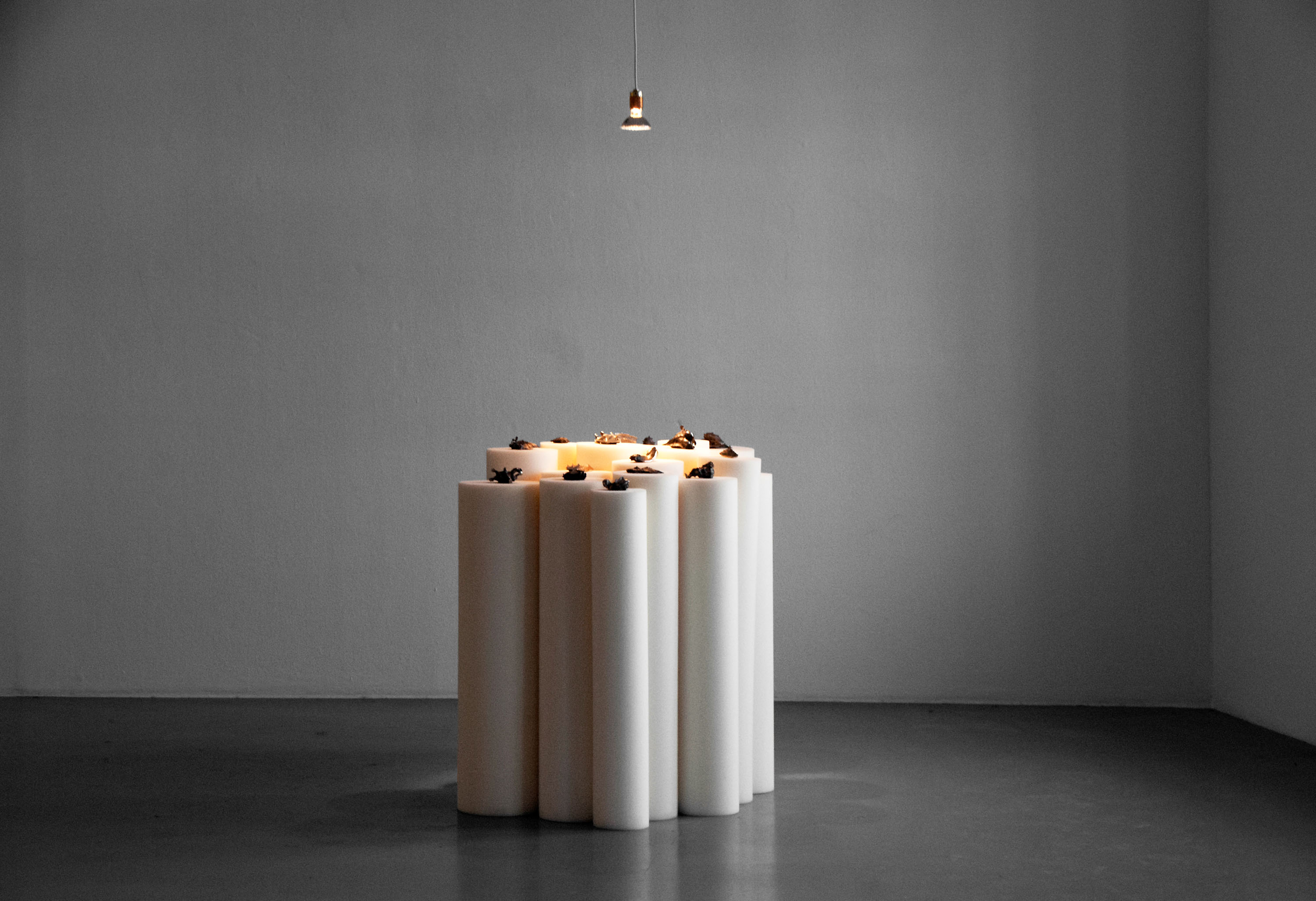Anetta Mona Chişa & Lucia Tkáčová
What is money? What projections are attached to it, what is it actually “useful” for? The works by Anetta Mona Chişa and Lucia Tkáčová encourage us to think about this. A Moldovan mother of a boy works in the West, but the boy does not understand why she is away. The father tells him about that wonderful far-off land where money only has to be put in the ground to be harvested at several times its original value. That is where the mother is now. Longing for her and the hope of such miracles also in his home country tempt the boy to try out this method of wealth accumulation in his native soil: the tragedy takes its course. Inspired by a newspaper article, the playwright Nicoleta Esinencu wrote a play entitled when you’re adibas and you’re dreaming of becoming adidas (a theatre play for europe). Now the artists Anetta Mona Chişa and Lucia Tkáčová have written it down in fragments of sentences on 388 plain five-euro notes. In front of the video camera, they are gradually piled on top of each other, offering themselves up to be read. It is, as the artists write, a story about absurd realities, the psychology of money and the abstractness of the idea of the economy, told on money.
For their second work shown here, Things in Our Hands. objects casted from melted euro coins, euro coins were melted down, as the title suggests, and cast into roughly fist-sized sculptures. They resemble primeval, indeterminate tools or post-apocalyptic meltdowns of civilisation scrap. Chunky hand-sized objects, they suggest action and doing and want to be touched. Formally and intellectually, they form a highly poetic contrast to their source material, the cold abstraction of money in its industrial form and utterly useless materiality.
In its paper and metal apparition, money serves as a direct and physical, albeit symbolic, carrier for value. The nature of material currency is fundamentally twofold – it is purely semiotic and fully substantial at the same time. Money embodies an essential coincidentia oppositorum; on one hand it is a mere representation based on general agreement and trust, its metaphysical value being constituted and ratified by ceaseless spinning of an abstract economic system. On the other hand, the material currency exists entirely in its corporeality and its vulnerable presence in the physical reality – it can be held in hands, forgotten in pockets, hidden, stolen, damaged, lost and forged.
Before there was any concept of money, the only value we put on things was how they would help us survive. Value is fleeting and is dependent upon a numerous amount of factors and situations, the primary of which are scarcity and demand. What makes money worth something is its rarity and desirability as well as whether or not it can be used and traded for tangible assets and necessities. Money may be worth those things today, but it wont buy anything in apocalyptic times or in catastrophic, existential situations.
In the absence of trade and prices money, the way we have it materialised now, is of no (or very little) use. In an attempt to inflict the material of coins a higher (and real, practical) value, we used it to manufacture complex objects which can inspire various uses and, moreover, in dire times they could be the highest desired currency: tools for survival. Things in Our Hands is a series of sculptures made out of melted euro coins, looking like mysterious tools, weapons of a dark cult or unidentifiable archaeological findings. The casts are hard and fragile, pointy and round, sharp and ergonomic, pragmatic and strange. Here, money is liberated from its symbolical value and can be used as hand axes, as useful survival means: for digging, cutting, stabbing, splitting. Similarly to the narrative of money itself, these sculptures trace the shift from concrete to abstract. Made by human hands and inheriting their shapes, they incarnate the bittersweet relation between our bodies and money, the ephemerality of both, and foreshadow their ends. Things in Our Hands embody the state of before and after the existence of money in our world, they materialise the two end points of its trajectory. On one end, they are rooted in pre-history, in the times before money was invented, when collaboration preceded competition and ownership did not infect human interactions. On the other end, they are forecasting the after-apocalyptic future when money becomes valueless and can only count and be used as pure matter. Things in Our Hands might look like fossils from the past, but in fact they prefigure fossils from the future. Value is fiction, matter is real.
Anetta Mona Chişa & Lucia Tkáčová
Biographys
Anetta Mona Chişa
*1975, Nădlac, RO; lebt in Prag
Lucia Tkáčová
*1977, Banska Stiavnica, SK; lebt in Athen
Zusammenarbeit seit 2000
A 2022 mixed up with others before we even begin, mumok, Wien (K); Empowerment, Kunstmuseum Wolfsburg (K); The Influencing Machine, Center for Contemporary Arts Zamek Ujazdowski, Warschau (K) • 2021 Before or After, ArtivistLab, Prag (E); Hinterm Nischel, Chemnitz Open Space, Kunstsammlungen Chemnitz; Football. Realism of the game, Floreasca Sports Hall, Bukarest; Intimacy and spectacle in the age of social media, Sofia Art Projects, Sofia • 2020 To Cast Too Bold A Shadow, The 8th Floor, New York City; Uneven Ground, Fotograf Festival, Prag; Floating Utopias, Lunds Konsthall, Lund; The Way We Are 2.0, Weserburg, Museum für moderne Kunst, Bremen • 2018 i aM an acuTe havoc, so i cAn‘t taLk, Calina Foundation, Timișoara (E); a no, A voLcanic attaCk, a hiT, a Muse, Museumcultuur Strombeek,Gent, Strombeek (E)
P Museum III 2.3, Gent 2020 • a Love Can atTack a sun. Ah atoMic I., Bratislava 2018 • n.b.k. Exhibitions Vol. 2 – Anetta Mona Chisa/Lucia Tkáčová, Köln 2009


